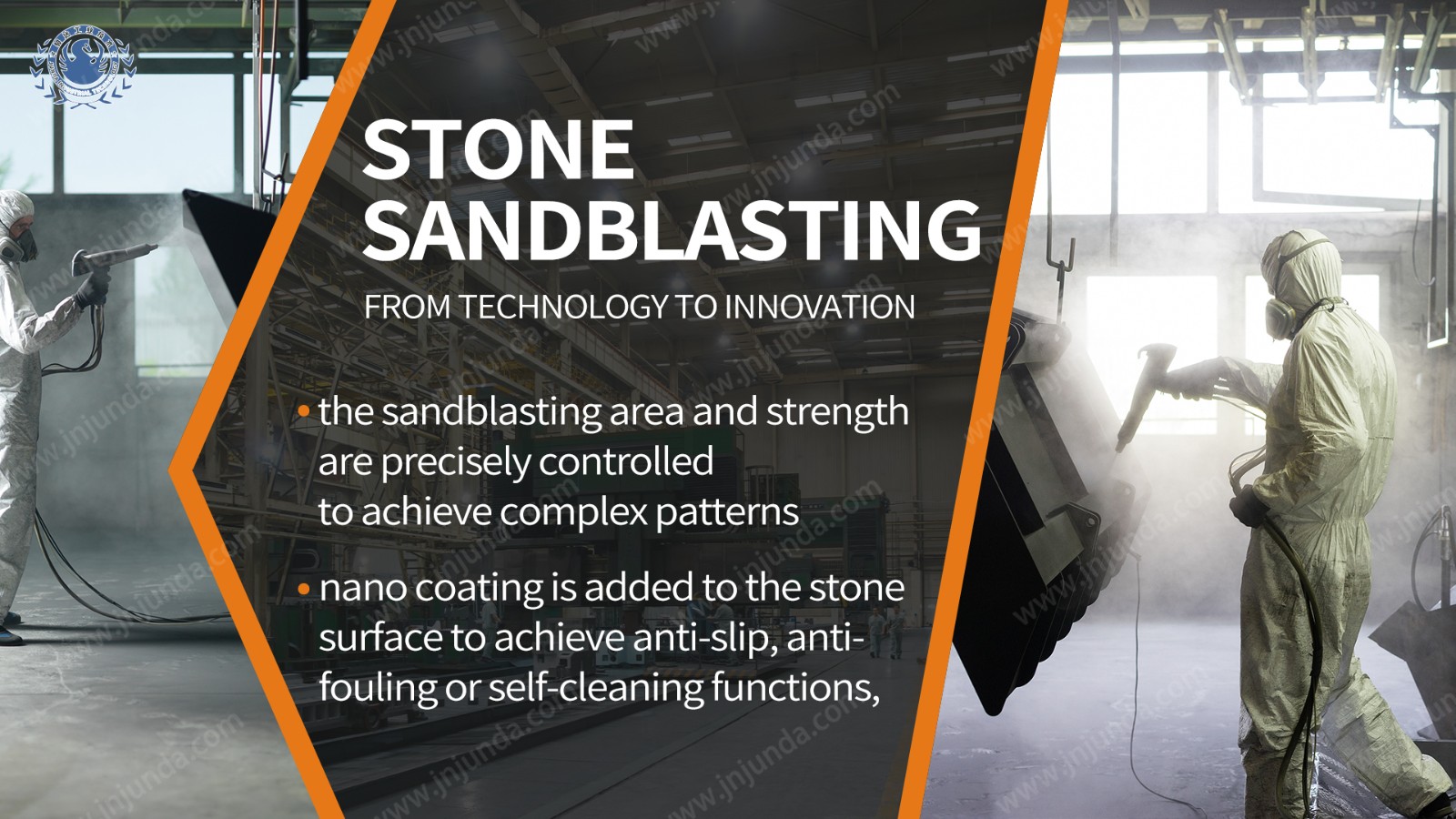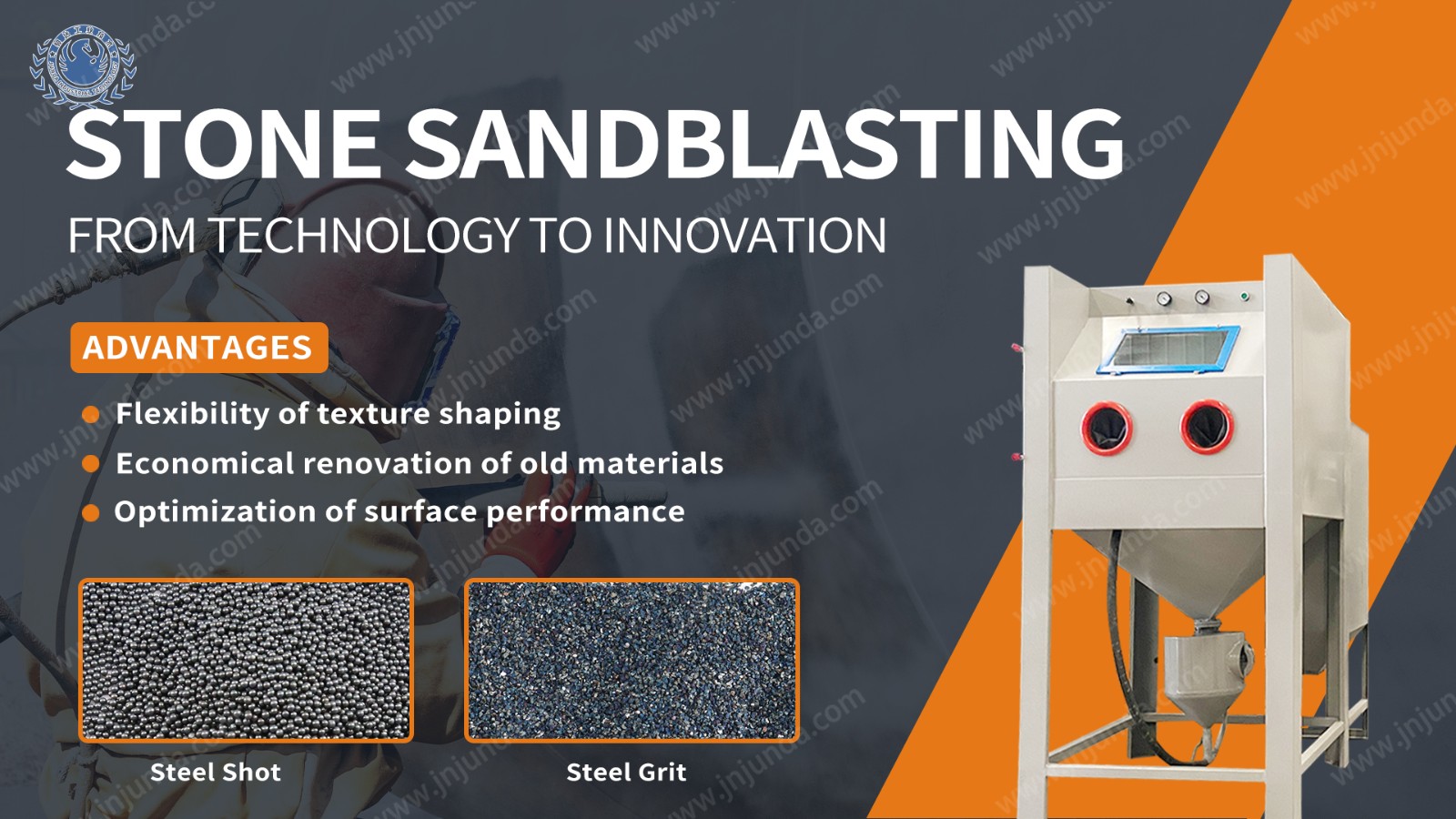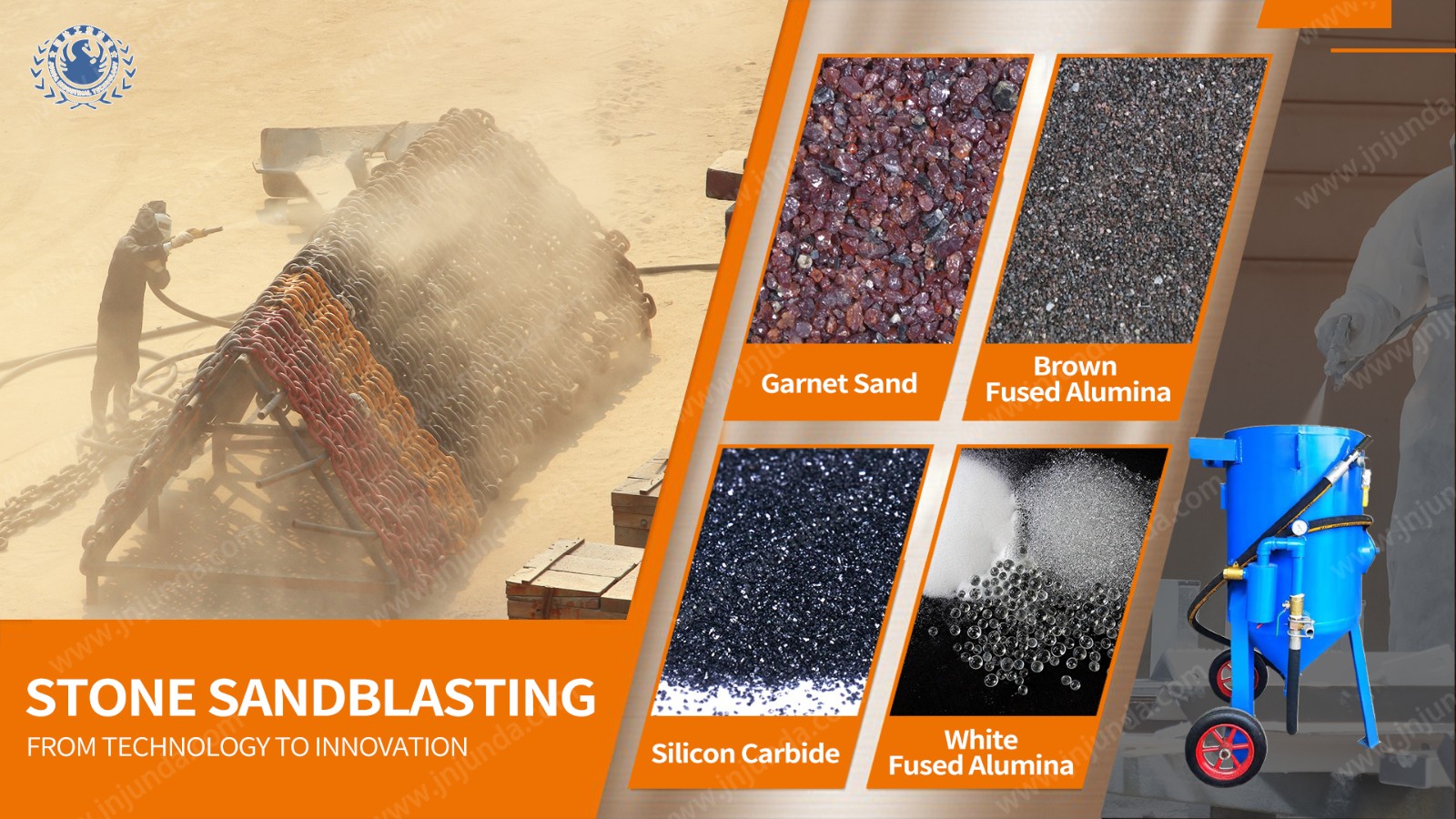As we all know, sandblasting has a wide range of applications, involving all walks of life. Today we mainly introduce its application in stone.

1.
What is stone sandblasting
Stone sandblasting is to spray sandblasting abrasives at high speed onto the surface of stone through high-pressure airflow, and use the impact force of the abrasives to cut, grind or shape the surface of the stone. This process can not only remove the original defects of the stone (such as rust spots and burrs), but also actively shape the texture. It can make the surface of the stone form a rough texture, and can also be used for carving patterns, rust removal or renovation of old stones.
2. Advantages of stone sandblasting
- Flexibility of texture shaping: The sandblasting process can accurately control the surface roughness by adjusting the abrasive particle size, spray angle and pressure-small particles of abrasive can create a delicate matte surface, and large particles can form a rough texture similar to lychee surface, and even imitate natural forms such as wood grain and rock texture.
- Economical renovation of old materials: For old stone components (such as stone carvings of ancient buildings and worn floor tiles), sandblasting can effectively remove the surface weathering layer and stains, and restore its original appearance without disassembly, and the cost is lower than replacing new materials.
- Optimization of surface performance: The rough surface after sandblasting can significantly improve the anti-slip coefficient of the stone, making it more suitable for outdoor steps, bathroom floors and other scenes; at the same time, the rough surface can enhance the adhesion of the coating, lay the foundation for subsequent waterproof and anti-fouling treatment, and extend the service life of the stone.
3. Innovative processing direction of stone sandblasting
- Texture customization: Through CNC equipment, the sandblasting area and strength are precisely controlled to achieve complex patterns such as imitation wood grain and fabric texture, so that the stone has both natural texture and design sense, and is often used for indoor walls and decorative ornaments.
- Functional combination: After sandblasting, nano coating is added to the stone surface to achieve anti-slip, anti-fouling or self-cleaning functions, expanding the application range of stone in outdoor floors, bathrooms and other scenes.

In short, when it comes to sandblasting stone, we Junda can provide customers with precise, environmentally friendly and efficient sandblasting media and solutions. To learn more about the application advantages of sandblasting and how we Junda can improve sandblasting performance for customers, please feel free to contact us to learn about the sandblasting solution that is more suitable for you!






